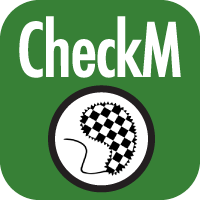The publication by Jennifer L. Goff, Chris Hahn, Rebecca A. Ingrassia, Chanistha Tiyapun, Gray G. Waldschmidt, Emma R. Smith, Miranda N. Marini, Olga Shevchenko, Julia A. Maresca can be found here: [URL]
Note that PFAS_118_3 = WV_118_3


| Created Object Name | Type | Description |
|---|---|---|
| PFAS_118_3_filtlong.reads | SingleEndLibrary | Filtered reads |

| Created Object Name | Type | Description |
|---|---|---|
| PFAS_118_3_flye.contigs | Assembly | Assembled contigs |


| Created Object Name | Type | Description |
|---|---|---|
| Flavobacterium_Assembly | Genome | RAST annotation |
The RAST algorithm was applied to annotating a genome sequence comprised of 1 contigs containing 3853966 nucleotides. No initial gene calls were provided. Standard features were called using: glimmer3; prodigal. A scan was conducted for the following additional feature types: rRNA; tRNA; selenoproteins; pyrrolysoproteins; repeat regions; crispr. The genome features were functionally annotated using the following algorithm(s): Kmers V2; Kmers V1; protein similarity. In addition to the remaining original 0 coding features and 0 non-coding features, 3773 new features were called, of which 165 are non-coding. Output genome has the following feature types: Coding gene 3608 Non-coding repeat 87 Non-coding rna 78 Overall, the genes have 0 distinct functions. The genes include 0 genes with a SEED annotation ontology across 0 distinct SEED functions. The number of distinct functions can exceed the number of genes because some genes have multiple functions.

| Flavobacterium_Assembly |
| Flavobacterium_Assembly |
| Created Object Name | Type | Description |
|---|---|---|
| Flavobacterium_Assembly.mdl | FBAModel |


| bio1 |
| Created Object Name | Type | Description |
|---|---|---|
| Gapfill_188_3 | FBAModel | FBAModel-15 Gapfill_188_3 |
| Gapfill_188_3.gf.0 | FBA | FBA-13 Gapfill_188_3.gf.0 |

| bio1 |
| Created Object Name | Type | Description |
|---|---|---|
| 118_3_FBA | FBA | FBA-13 118_3_FBA |
(1)Whitman, William B., ed. Bergey’s Manual of Systematics of Archaea and Bacteria. 1st ed. Wiley, 2015. https://doi.org/10.1002/9781118960608.
(2)Enisoglu-Atalay, Vildan, Belkis Atasever-Arslan, Bugra Yaman, Rumeysa Cebecioglu, Aykut Kul, Selma Ozilhan, Fatih Ozen, and Tunc Catal. “Chemical and Molecular Characterization of Metabolites from Flavobacterium Sp.” Edited by Gabriel Agbor. PLOS ONE 13, no. 10 (October 17, 2018): e0205817. https://doi.org/10.1371/journal.pone.0205817.
(3)Alexandrino DAM, Ribeiro I, Pinto LM, Cambra R, Oliveira RS, Pereira F, Carvalho MF. 2018. Biodegradation of mono-, di- and trifluoroacetate by microbial cultures with different origins. N Biotechnol 43:23-29.
(4)Kiledal E, Maresca JA. 2021. Chromosomal DNA extraction from Gram-positive bacteria. protocolsio.
(5)Frank JA, Reich CI, Sharma S, Weisbaum JS, Wilson BA, Olsen GJ. 2008. Critical evaluation of two primers commonly used for amplification of bacterial 16S rRNA genes. Applied and environmental microbiology 74, 2461-2470.